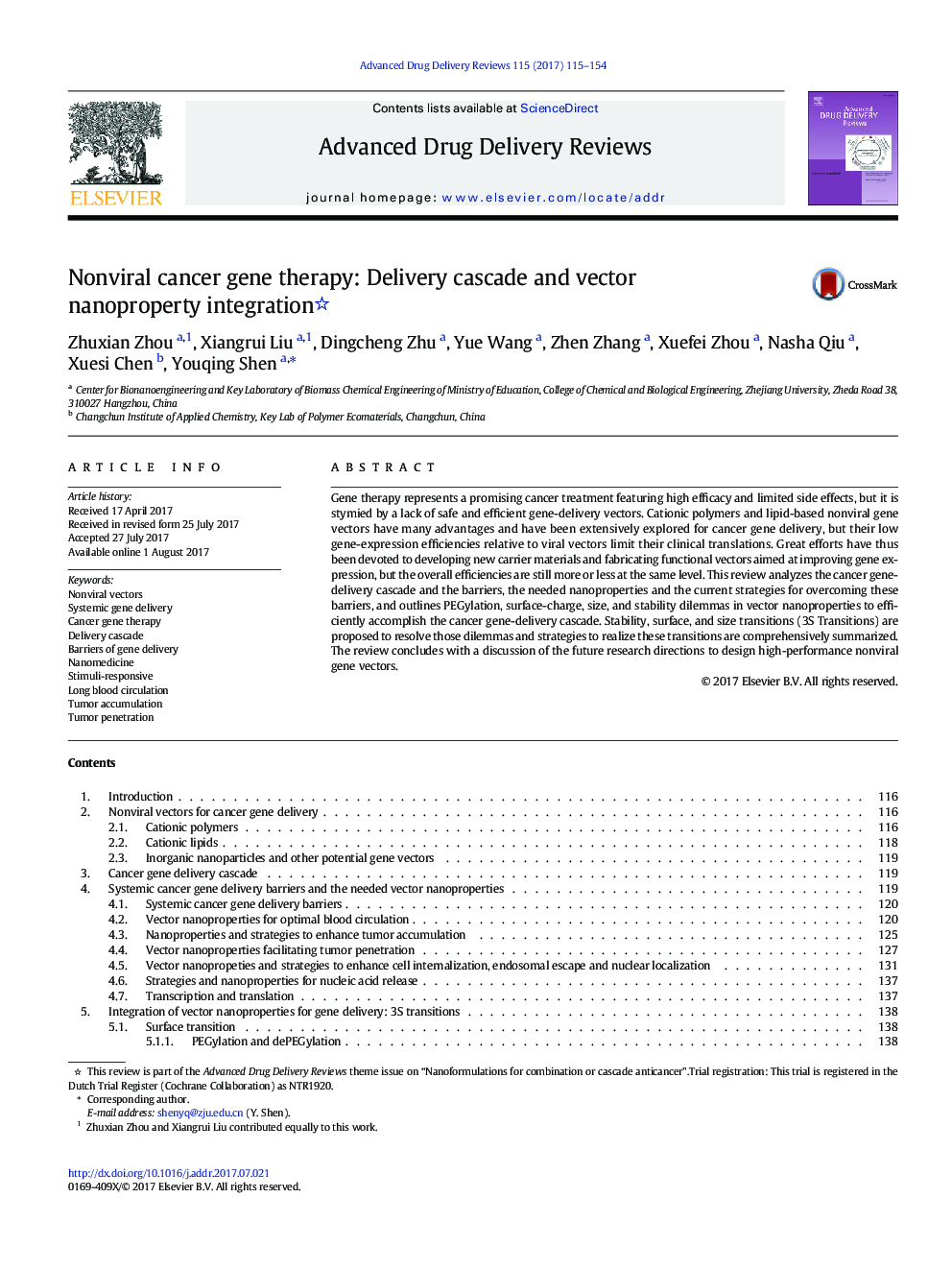| کد مقاله | کد نشریه | سال انتشار | مقاله انگلیسی | نسخه تمام متن |
|---|---|---|---|---|
| 5519982 | 1544553 | 2017 | 40 صفحه PDF | دانلود رایگان |
Gene therapy represents a promising cancer treatment featuring high efficacy and limited side effects, but it is stymied by a lack of safe and efficient gene-delivery vectors. Cationic polymers and lipid-based nonviral gene vectors have many advantages and have been extensively explored for cancer gene delivery, but their low gene-expression efficiencies relative to viral vectors limit their clinical translations. Great efforts have thus been devoted to developing new carrier materials and fabricating functional vectors aimed at improving gene expression, but the overall efficiencies are still more or less at the same level. This review analyzes the cancer gene-delivery cascade and the barriers, the needed nanoproperties and the current strategies for overcoming these barriers, and outlines PEGylation, surface-charge, size, and stability dilemmas in vector nanoproperties to efficiently accomplish the cancer gene-delivery cascade. Stability, surface, and size transitions (3S Transitions) are proposed to resolve those dilemmas and strategies to realize these transitions are comprehensively summarized. The review concludes with a discussion of the future research directions to design high-performance nonviral gene vectors.
339
Journal: Advanced Drug Delivery Reviews - Volume 115, 1 June 2017, Pages 115-154
